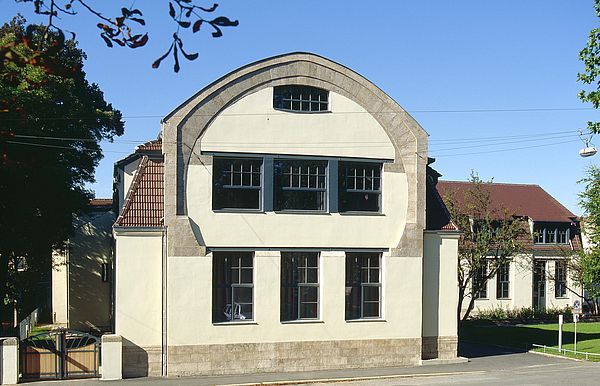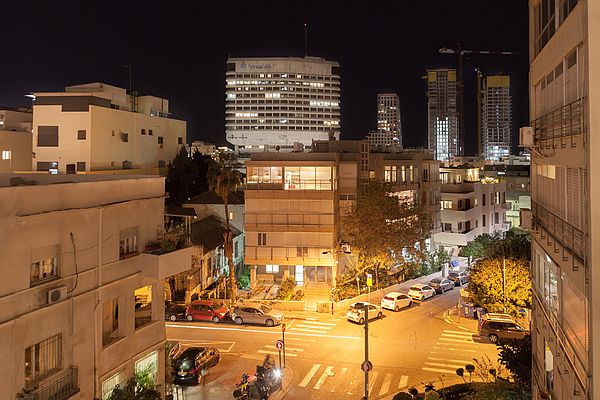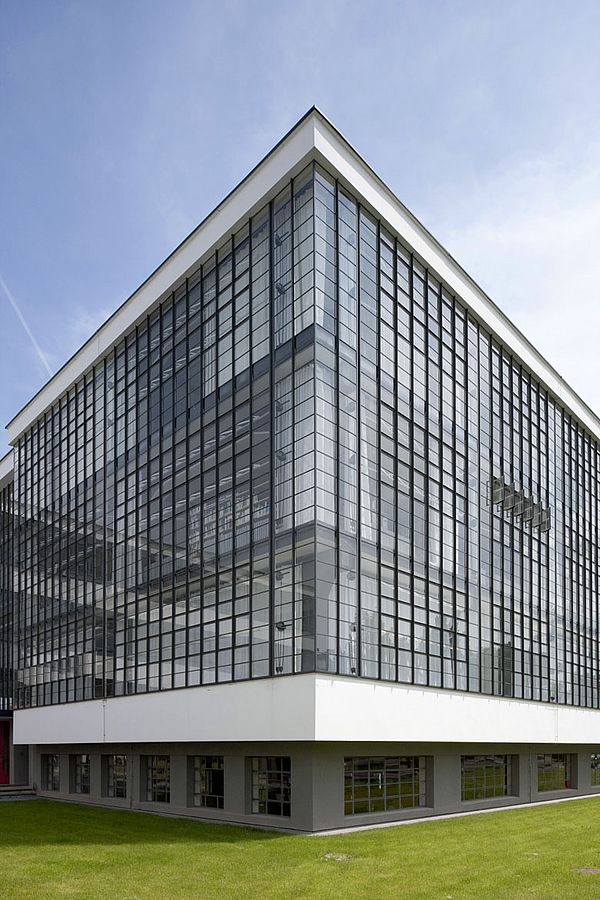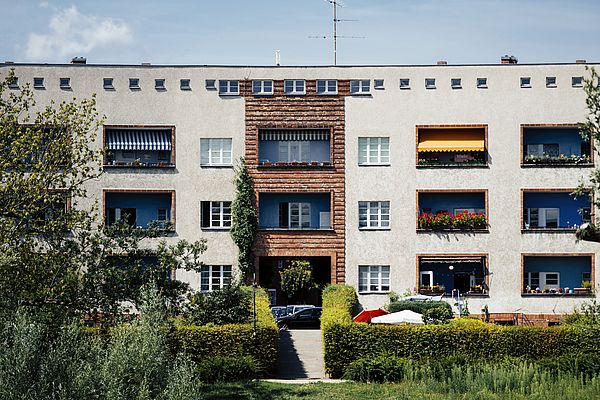Triennial of Modernism
The ‘Triennial of Modernism’ began in Weimar on 26 September 2019. On three consecutive weekends it enabled the public to experience and view the architectural heritage of modernism by way of tours, events and exhibitions.
headline
The main thematic emphasis was on the relationship between Israel and the Bauhaus. To this end, the Bauhaus Kooperation and other actors in Berlin, Dessau and Weimar worked closely with modern World Heritage sites in Tel Aviv, the partner city 2019. Jeremy Issacharoff, Ambassador of the State of Israel in Germany, was consequently also appointed patron of this third ‘Triennial of Modernism’.
The ‘Triennial of Modernism’ began in the Weimarhalle on the evening of 26 September 2019 with the concert ‘Stimmen des Volkes’, featuring Maybebop and the Staatskapelle Weimar. The musical launch heralded a weekend focused on the urban spaces of modernity, inviting people to participate in Bauhaus walks, lantern-lit walks and ‘walk and talk’ events outdoors. But Weimar also had plenty to offer those who prefer to enjoy culture with a roof overhead: Jam sessions, a German-Israeli film evening, jazz and ‘The Triadic Ballet’ invited audiences to experience modernism in action. Exhibitions on architecture, town and country further expanded horizons. Naturally, the Bauhaus-Museum Weimar and the World Heritage sites, including the prototype Haus am Horn, also played a part in the Triennial.

headline
The exhibition ‘The Matter of Data’ in the Bauhaus-Museum Weimar explored the architecture of Germany and present-day Israel. It investigated the migration history of ‘Bauhaus Modernism’ in relation to the export of structural components and building materials from Germany to Palestine in the 1930s. Liebling Haus - The White City Center, in which the exhibition was shown simultaneously, served here as an example. The exhibition combined film and archive studies, material analyses and digital building documentation in an extensive data platform. The Centre for Documentary Architecture, the Bauhaus-Universität Weimar and Liebling Haus - The White City Center are members of the network.

headline
As the last notes of the ‘Alles Musik’ jam faded away in Weimar, Dessau was warming up for the second Triennial weekend from 4–6 October 2019. Here, the spotlight was on ‘Material and architecture’. The visitors of the Triennial were invited to explore examples of modern architecture throughout the city, to tour and discover various buildings and seek out traces of the materials and lived-in worlds of modernism. Naturally, these buildings included the new Bauhaus Museum Dessau. The city was explored on foot or by bike; Bauhaus researchers offered guided tours. Lectures and talks, discussions and film presentations were designed to encourage debate: How do we live in a healthy and economic way? How has housing changed over recent decades?
To this end, in the Bauhaus Building the Bauhaus Dessau Foundation presented its new exhibition of objects from the Building Research Archive – a unique archive worldwide in which building materials and objects, testimonies to modern architecture, are collected, researched and preserved.
The exhibition ‘Transferumbau’ offered insights into the history of modern architecture and its materials in Tel Aviv. Here, the use of many construction materials from Germany was based on the Haavara Agreement between Zionists in Palestine and National Socialists in Germany. The agreement was designed to encourage German Jews to emigrate by enabling them to transfer some part of their assets to Palestine. The exhibition examined this transfer agreement from artistic, architectonic and political perspectives. It was shown simultaneously in the Bauhaus Building in Dessau and in Liebling Haus – The White City Center in Tel Aviv.

headline
The Triennial reached its conclusion in Berlin under the heading ‘Modern World Heritage’. Here on the third Triennial weekend from 10–13 October 2019, the Hufeisensiedlung (Horseshoe Estate) and the temporary BHR OX bauhaus reuse became festival hubs, generating impulses that had an impact throughout the city. The diverse programme was well-suited to metropolitan Berlin.
In the metropolis on the river Spree it is possible, as it is nowhere else in the world, to perceive the individual facets and developmental stages of modernism as a coherent whole, from the industrial cathedrals of the ‘Berlin electropolis’ and the reform architecture of the early 20th century to the automotive city, the large-scale housing developments of the 1970s, or the post-modernism of the mid-1980s, which brought forth the end of an era.
Guided tours, private views, bus tours, design tours, lectures, audio walks and sightseeing tours brought Berlin ‘originals’ and characters such as the urbanists Bruno Taut and Le Corbusier to the fore. Visitors were able to visit ‘cathedrals of work’ as well as studio flats, the housing estate Onkel Toms Hütte, the Hansaplatz, row houses, the Weiße Stadt in Reinickendorf, or Alexanderplatz. Several architects and the Chamber of Architects offered their perspectives on modernism.

More
Find out more about the exhibitions, the concept and programme highlights on the website of the Triennial of Modernism.